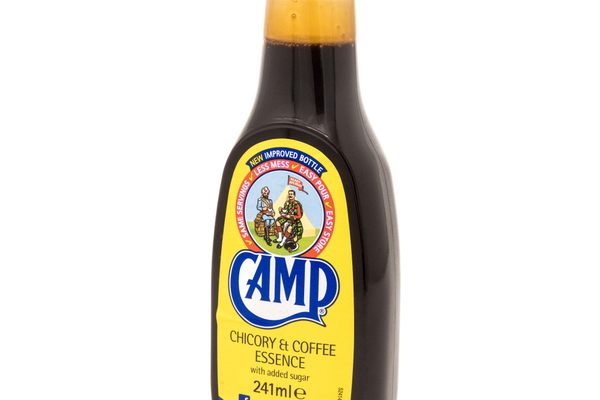Drinks
Soylent
One fantasy food's journey from sci-fi vegan steak to silver screen cannibalism to actual meal replacement.
Rob Rhinehart was working at a tech startup in San Francisco, living off a diet of ramen and corn dogs, when he launched a vegan meal-replacement powder. It was 2014, and he’d collected nearly $1.5 million in preorders via crowdfunding. He called the product Soylent, which has since evolved into a widely-distributed brand that includes premixed bottled drinks.
The first mention of the term soylent is as a soy-and-lentil “steak” featured in Make Room! Make Room!, a 1966 sci-fi novel. Set in 1999, the plot centers around overconsumption in New York City, whose population has ballooned to 35 million. The protagonist discovers pandemonium after a neighborhood shop puts “soylent” on sale and is promptly looted.
Charlton Heston’s 1973 film, Soylent Green, is inspired by the dystopian tale. This go-around, it’s 2022, and Earth is overpopulated, polluted, and depleted of natural resources. Soylent Industries distributes nourishment in the form of “Soylent Green,” a food ration supposedly made of ocean plankton. A detective uncovers the movie’s horrifying plot twist. The oceans, and all plankton contained therein, are dying, and (spoiler alert) Soylent Green is made of people.
Today’s Soylent, which is soy-based, harkens back to the plant-based steak in Make Room! Make Room!, not the people-disguised-as-plankton in Soylent Green. With the bottled versions clocking in at 400 calories each, the substance relies on soy protein isolate, sunflower oil, and a sugar synthesized from beets, combined with a vitamin-and-mineral mix. After launching an original flavor that some tasters likened to pancake batter, the company has since released flavors in cacao, strawberry, and vanilla.
As a New Yorker feature pointed out, some have feared that Soylent heralds “the end of food.” Critics have noted that a complete reliance on the meal replacement would mean not only losing certain nutrients that one can get only from real foods (especially plants), but losing the culturally significant ritual of making and sharing food itself.
But while Rhinehart claims that one could live entirely off Soylent, society isn’t quite there yet. For now, it’s most often used as an occasional meal replacement. And despite the name’s playful dystopian association, no one has managed to prove any convoluted cover-ups for involuntary cannibalism. In fact, the connection may have even helped the company appeal to another consumer base: doomsday preppers.
Written By
 rachelrummel
rachelrummel
Sources
- www.theatlantic.com/health/archive/2014/04/the-man-who-would-make-eating-obsolete/361058/
- www.newyorker.com/magazine/2014/05/12/the-end-of-food
- recipes.howstuffworks.com/soylent1.htm
- www.theverge.com/2014/7/17/5893221/soylent-survivor-one-month-living-on-lab-made-liquid-nourishment
- articles.latimes.com/2008/apr/10/entertainment/et-book10













